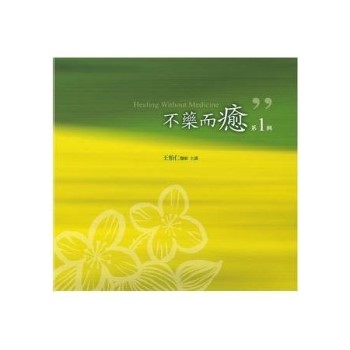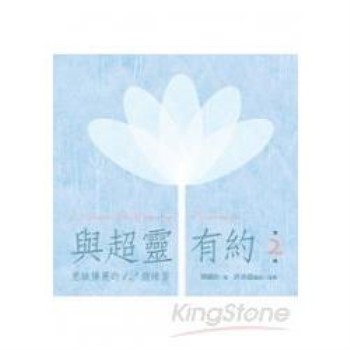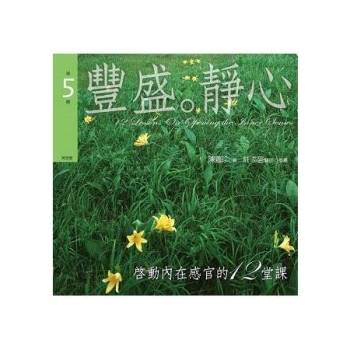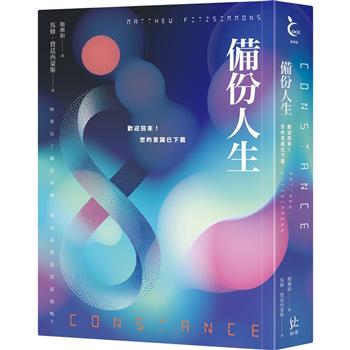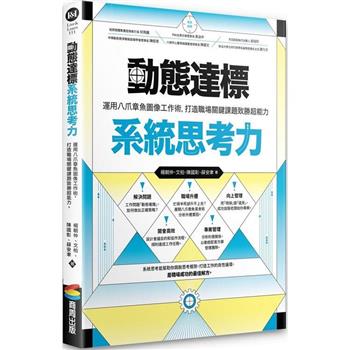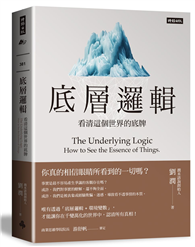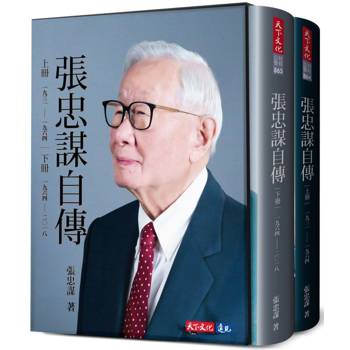學術界經常使用西方史學的方法進行佛學研究,然而研究的結論經常不能令佛教界心悅誠服,乃至產生許多的衝突。這種採用西方史學方法進行佛學研究始自清末民初,研究者對於西方史學研究方法的採用,產生對中國史學的全面性衝擊。於是史學界便有所謂的「疑古派」史學家不斷地出現,成為近代史學研究的主要流派。疑古派的研究態度對於史學研究雖有所貢獻,但是也經常產生荒謬不經的結論而貽笑大方,例如顧頡剛就是代表性人物。顧頡剛提出中國古代史是「層累地」造成,震撼中國古代史的研究;但是,他認為「禹是一條蟲」,則又淪為史學研究的笑柄。為什麼一位精於運用史學方法的學者,竟然會有評價這麼極端的結果?答案是,疑古派以「不知為不有」作為研究的思想前提,導致凡是「不知的」就一定「不存在」的誤謬。除此之外,東西方史學研究方法過於重視文字文獻而缺乏實地證實的方法,其不足與錯誤也是導致誤謬的重要因素。綜合而言,對於西方史學思想與方法的全面採用,而沒有反思其前提是否正確的能力,也就沒有發現其謬誤而加以批判的智慧,這樣的研究必然導致研究成果品質的不穩定,乃至於全盤皆錯的境地。
同樣的,既然學術界使用史學方法進行大眾所熟悉之世俗世界的歷史研究,尚且產生極大的錯謬;若要對於本質上超越世俗世界,追求法界實相智慧的佛教來進行學術研究,如果研究者本身沒有認識清楚生命與法界的本質與事實真相,也不相信佛教中有真實修行與實證實相智慧的事實時,有可能不犯下錯誤嗎?對於這樣的命題,我們並不學習疑古派所主張「懷疑一切」的錯誤前提與態度;相反的,本會一些研究人員以實事求是的研究精神,從符合傳統佛教實證精神的三量原則,強調「實證佛教、實踐佛學」的重要性,進行史學命題的專題研究,以論文的形式提出研究成果,並且通過審查。茲臚列本期採用的三篇論文如下:
1、真史學與新史學——以《阿含經》略論佛教的史學地位(蔡禮政)
2、史權、史責與史家(白志偉、蔡禮政)
3、佛學研究與歷史想像——以阿含部經典略評呂凱文〈從兩類《央掘魔羅經》探討聲聞經大乘化的詮釋學策略〉(高惠齡、蔡禮政)
蔡禮政著作的〈真史學與新史學——以《阿含經》略論佛教的史學地位〉,係針對史學史的發展脈絡中,近代梁啟超以「新史學」之名,對於舊史學展開一系列有關於歷史的定義、主體範圍等等進行批判。而東西方史學界皆不約而同地以「新史學」之名,提出各種歷史理論與哲學觀念著作史籍,挑戰前人的理論與哲學觀點,乃至引發後現代主義對於傳統歷史主義的種種挑戰;於是基於文獻、文字、實物等等歷史遺跡作為史學基礎的傳統史學幾近於崩解,形成史學界「歷史之死」的恐懼。因此,「新史學」的蓬勃發展,反而導致「歷史之死」的危機。
該文認為不論新舊史學皆將歷史寄託於文字、實物等等歷史遺跡上,是對於歷史的錯誤定義,正確的歷史定義應以所有事實作為範圍,而不以歷史遺跡為限,並以此展開對於歷史的性質、主體範圍、功能等等的探討。該文認為歷史的性質具有過去性、現在性與未來性,並不僅止於傳統史學所認為的過去性,或極少數史學家認為的現在性而已;而歷史主體並不是僅有人類而已,歷史主體範圍應該要包括與人類共同生存的畜生道有情,乃至完整的歷史主體則是十法界的一切有情。
該文認為新舊史學將歷史寄託於文字、實物等等,必然導致後現代主義所質疑歷史的斷裂、不連續、想像、不實等不可避免的問題;若歷史主體唯有人類,也必然導致人類眼光的狹隘與短視,最後危害人類本身的生存。因此,不論新舊史學所建立的史學皆是充滿不實、想像,是對眾生沒有利益的假史學,也是自身矛盾而導致「歷史之死」的假史學。真史學則以十法界有情各自皆有第八識如來藏作為判斷歷史主體的標準,如來藏的本體真實存在而能記錄一切業行,並且顯示名法(七識心)與色法(物質)之間的規律。依於第八識如來藏的真實存在所建立的真史學,才是符合法界事實真相的真正史學,才是有利益於一切有情的真史學。
由於該文釐清歷史的基本定義、性質、主體範圍與功能,並且針對新舊史學皆以名色作為內部邏輯的起點與終點,必然導致歷史產生斷裂、不連續的矛盾與不一致提出批判。該文提出以第八識如來藏作為史學內部邏輯的起點與終點,能使歷史不再產生斷裂、不連續的矛盾與不一致,重建史學的堅實基礎與架構,足令史學起死回生。因此,本篇論文不但具有學術創見,而且深具開創性,未來將對史學產生根本性的影響,使歷史學從危害有情的假史學時代,邁向利益一切有情的真史學時代。
白志偉與蔡禮政合著的〈史權、史責與史家〉,探討新舊史學家著作史籍係從種種事實中挑選部分事實而記述之;此種挑選事實的權利,即是史權。該文認為史學家應該為史權的實踐負起史責,而史權與史責亦是因果對應關係的一種;新舊史學家著作史籍,多是錯誤地建立欲界愛中我所的價值與意義,導致人類彼此不擇手段地爭奪世間名聞利養而征戰不已的情形加劇,這是史學家所必須負起教唆人類征戰的責任,而且不能逃脫於法界因果律則之外;不管他們信不信有因果律則存在,法界的事實就是這樣如實的呈現與紀錄。在此也提醒史學家面對法界的實相,使真正的歷史可以真實呈現而增上其利益有情的功能,達成以古鑑今而利益有情的功能,亦是真史學的一部分。因此史學家在行使史權的同時,必須對於應負的史責具有正確的認知。該文認為過去的史學家實踐史權,研究歷史事實、發現歷史規律時,眼光乃是極為狹隘而短視,僅以極短暫的數千年人類歷史,卻想推演整個法界的歷史規則,於是經常產生錯誤的結論。因此,一切史學家皆應該學習並宣揚真史學,以實證的方法擴大自己與一切有情的眼界,提昇有情在法界中的功德,才是史學家應盡的史責。
該文依於史學家挑選歷史事實的史權概念,擴充史家的範圍以吻合十法界有情的真實相,才能究竟成就真史學。換個層面來說,如同記載過去歷史的史學家一般,現代新聞從業人員與傳播從業人員,皆在每日發生的種種事實中選擇部分事實作為新聞而傳播之,因此也都是實行史權的史學家,也都應該遵守史學家的道德倫理規範,同樣也必須負起相對應的史責。從史權的概念再擴大之,則人人皆在生存的過程中,選擇部分事實而對其認知,並且依此認知而造作種種事業,所以人人皆是史學家,也都應該為自己選擇認知的事實,負起史責。該文探討史權、史責與史家的範圍,皆是史學界以往所忽略的領域,因此該文亦深具創見與開創性,是史學界難得一見的佳作。
高惠齡與蔡禮政合著的〈佛學研究與歷史想像——以阿含部經典略評呂凱文〈從兩類《央掘魔羅經》探討聲聞經大乘化的詮釋學策略〉〉,探討佛學研究應該以佛教的教理為核心,不應該以歷史想像及錯會文字後的判斷作為核心,並以呂凱文的系列論文作為舉例與評論的對象,顯示史學研究方法若以歷史想像、法義想像為核心,必然產生種種的謬誤。該文認為呂凱文主張「聲聞乘與聲聞經是大乘與大乘經的宿主」,預設小乘聲聞的歷史先於大乘菩薩的歷史,是預設立場而作先判的「大乘非佛說」的錯誤歷史想像,並不符合歷史事實。因為《阿含經》所記載的歷史事實是:佛陀先成佛之後,才宣說小乘聲聞法,不是先宣說《阿含經》小乘聲聞法以後才成佛;而佛陀本身是世世修習菩薩道而成佛者,不是世世修習聲聞解脫道而成佛者,所以佛陀本身就是大乘菩薩法道最高的果證者,當然不該如呂凱文所說的只懂《阿含經》解脫道的阿羅漢,而是真實已成之佛;而且佛陀的繼位者並不是聲聞阿羅漢,而是彌勒菩薩。這些都是三乘共許的歷史事實,由此便足以證明「大乘非佛說」之主張只是歷史想像,而非歷史事實。《阿含經》既已記載彌勒菩薩將於未來世成佛,是釋迦佛陀的繼位者,則已顯示聲聞阿羅漢的修證遠遠不如彌勒菩薩;此亦顯示三乘賢聖同聞大乘經典的事實,證明小乘聲聞亦是大乘經的聽聞者,只是因為沒有實證大乘法而聽不懂大乘菩薩法,故不能成就念心所,無法詳記大乘經的內容,所結集出來的大乘經典必然非常簡略而唯有名相。因此,只有在「大乘法與大乘經是聲聞乘與聲聞經的宿主」的歷史事實作為前提下,歷史事實與佛教教理才能達到一致性而沒有任何矛盾存在,這樣才是完備而且符合事實的佛學研究,才能符合佛法弘傳的真實歷史。
除此之外,該文認為呂凱文預設佛教的小乘聲聞與大乘菩薩二者間只存在著不可共量性,也是無知於歷史事實與佛教教理的錯誤觀念。因為佛教教理存在著至少四種位階的共量與不共量,但是只有一種大乘典範存在,小乘只是大乘入門的初階而非典範。四種位階從最下階到最上階為:六凡業道眾生、小乘聲聞(含攝緣覺)、大乘菩薩與佛陀。其中最下階六凡業道眾生的境界,是四種位階皆可共量的境界,小乘聲聞的境界是小乘聲聞、大乘菩薩與佛陀等三種法道有情皆可共量的境界,如此依序類推;反之,佛陀的境界具有其餘下三階所不可共量的性質,菩薩的境界具有餘下二階所不可共量的性質,如此依序類推。而小乘聲聞、大乘菩薩與佛陀三個位階,是三種並立的階梯,是適應於五濁惡世眾生根器,可以循序漸進往上修行的階梯,而以佛陀為唯一的典範,並沒有典範轉移或消滅的問題。
該文對於呂凱文論文所採用史學研究方法的錯誤前提,以及方法運用上專業不足的現象,提出種種精彩的評論,不但具體可見現代西方史學方法的不足與錯誤的前提假設,亦可一睹真正不掉入歷史想像的佛學研究所應具備佛法知見的專業性。該文對於佛教教理的闡述,以及對於史學研究方法的評論極富創見,亦是值得肯定的作品。
根據上述三篇論文的簡介可知,新舊史學對於歷史本身的定義、性質、主體範圍與功能等等最基本的內涵,不但不能正確認知與建立,而且所採用的史學理論與方法也無助於反思史學的困境,而尋得解決之道。由此可見,歷史學是目前人類發展過程中,仍然只是一門粗具雛型而尚未成熟的學科,因為人類可知的歷史只是極為短暫的數千年而已。這樣一門粗具雛型而尚未成熟的學科,其採用的研究方法也是極為幼稚而令人啼笑皆非。因為法界的事實真相中最關鍵而且是史學中最切身的事實與命題是:是否存在第八識如來藏作為一切生命的基礎?而這樣關於存在與否的命題,絕非只以極為幼稚的史學研究方法—「對比」古今中外的文獻—所能解決,特別要指出的是絕非取材於古時凡夫所寫下的文獻所能解決,也不是分析語源發展、語意邏輯等等解讀文字的史學方法所能解決。
實證佛教所宣說的聲聞解脫法門,或者菩薩實相智慧法門,乃至佛地的福德智慧雙具的境界,皆是以第八識如來藏真實存在,作為親證聲聞解脫、親證菩薩實相智慧,或者成就究竟佛道的基礎。因此,只有實證的方法,才能補足佛教史學乃至世間史學的研究方法;凡是不採用實證方法,僅以實證方法以外的史學方法—特別是以文字訓詁的方法—進行的佛學研究、歷史研究或者哲學研究,皆不能真正完整的解決問題。本期學報三篇關於歷史學的論文所申論者,正好顯示這樣的事實。祈請佛教界與學術界的賢達人士,共同思考其中的道理,並齊步邁向親證解脫與智慧的真史學境界。
Briefing
The academia usually applies the Western historiographical methodology to Buddhist studies. However, most of the research conclusions cannot convince the Buddhist society and even cause a lot of conflicts. The application of Western historiographical methodology to Buddhist research started from the late Ching and early Republican era. Due to the adoption of this methodology, it makes a great impact on the Chinese historiography, and thus the historians of so-called the Yigupai (the Doubting Antiquity School) continuously appear in the academia of historiography and become the main stream of the research in modern historiography. Although the research attitude of the Doubting Antiquity School contributes something to historiography, this attitude often makes some ridiculous conclusions and becomes a joke. For example, Gu Jiagang is a case in point; he proposed the theory that the history of ancient China was created “layer upon layer,” which shocked the researchers of the Chinese ancient history study; however, his viewpoint that “Yu is a worm” also became a joke. Why does a scholar who masters the methodology of historiography surprisingly have such extremely different evaluation results? The answer is that the Doubting Antiquity School uses the assumption that “those unknown must be nonexistent” as the logic premise of its research, and therefore it results in the false belief that anything “unknown” must be “nonexistent.” In addition, both Eastern and Western research methods on historiography overemphasize the method of documental study rather than actual realization; the insufficiency and errors of the method are the important factors in making wrong conclusions too. In sum, the completely adoption of the thought and method of Western historiography, yet without the capability to examine if the premise is correct or not, will make one lack of the wisdom to discover and criticize the errors. This way of research will definitely lead to the unreliable research results or even to a complete mistake.
With the application of historiographical method, the academia has made severe mistakes even in the historical research of the mundane world, which the public are familiar with; with the same methodology, if the academic research is about Buddhism, which is in essence beyond the mundane world and pursues the ultimate-reality wisdom of the dharma-realm, and if the researchers do not clearly understand the essence and true reality of both life and dharma-realm or believe the truth that there are real practice and actual realization of the ultimate-reality wisdom in Buddhism, how could it be possible not to make mistakes? For such a kind of proposition, we do not follow the wrong premise and attitude of “doubting everything” which is claimed by the Doubting Antiquity School; on the contrary, some researchers of our Association undergo the research of the proposition of historiography with the attitudes of finding the truth, conforming to the principle of three-valid-cognition-ways that is consistent with the traditional Buddhist positivism, and emphasizing the importance of “Positivist Buddhism and Practical Buddhist Study.” They submitted their research results with the format of thesis and have passed our review process. The following three papers have been accepted in this issue:
1.True Historiography versus New Historiography─A Brief Discussion on the Position of Buddhism in Historiography Based on The Agama Sutras (Tsai Lichen)
2.Historical Right, Historical Responsibility and Historians (Pai Chihwei and Chai Lichen)
3.Buddhist Studies versus Imagination on History─A Brief Comment, based on The Agama Sutras, on Lu Kaiwen’s “How Did Mahayana Buddhism Reform Savaka Sutta?: On Mahayana’s Hermeneutical Strategies by Two Kinds of Buddhist Paradigms of Angulimala Sutta” (Kao Huiling and Tsai Lichen)
Tsai Lichen’s article “True Historiography versus New Historiography─A Brief Discussion on the Position of Buddhism in Historiography Based on The Agama Sutras” criticizes, from the development history of historiography, that the modern scholar Liang Qichao’s definition of history, the scope of subject, etc. for the old historiography in the name of “new historiography”; at the same time, both Eastern and Western historiographical societies proposed various historical theories and philosophical concepts in their articles in the name of “new historiography” to challenge the former scholars’ theories and philosophical concepts, and it even provoked the challenges from Postmodernism to the traditional Historicism. As a result, the traditional historiography, which is based on the historical remains such as documents, texts, actual materials, etc., almost collapsed, and the fear of the “death of history” was raised in the historiographical society. Therefore, the flourishing of “new historiography” reversely results in the crisis of the “death of history.”
Tsai thinks it is a wrong definition of history that both new and old historiographies all study the history based on the historical remains such as texts, actual materials, etc. The correct definition of history should be based on all facts, rather than the historical remains, to explore the natures, scope of subject, functions, etc. of history. This article thinks the natures of history possesses the characters of past, present and future rather than the character of past thought by the traditional historiography or the character of present thought by very few historians. In addition, the subject of history includes not only human beings; its scope should also include the animals that coexist with human beings. The complete subject of history should even include all sentient beings of the ten dharma-realms.
The article thinks both new and old historiographical researches based on texts, actual materials, etc. will definitely lead to the inevitable problems of breakage, discontinuity, imagination, untruth, etc. of history, which are questioned by Postmodernism. If the subject of history only includes human beings, it will definite lead to the narrow and short vision of human beings, and endanger the survival of human beings finally. Therefore, both the new and old historiographies are full of untruth and imagination, and are the false historiographies which cannot benefit the sentient beings. They are also the false historiographies that conflict with each other and result in the “death of history.” The true historiography uses the eighth consciousness Tathagatagarbha, which each sentient being in the ten dharma-realms has, as the criteria to judge the subject of history. The original entity of Tathagatagarbha really exists and can record all karmic deeds; it also can manifest the rules between the name dharma (the seven consciousnesses) and the form dharma (the materials). The true historiography based on the real existence of Tathagatagarbha is the real one that conforms to the true reality of the dharma-realm and can benefit all sentient beings.
The article clarifies the basic definition, properties, scope of subject and functions of history, and criticizes both new and old historiographies for their using the name-and-form as the starting and ending points of internal logic, which will surely lead to the conflict and inconsistency of breakage and discontinuation in history. The article proposes that Tathagatagarbha acts as the starting and ending points of internal logic in historiography, and it can avoid the conflict and inconsistency of breakage and discontinuation in history. This viewpoint rebuilds a firm, solid base and structure for historiography and makes it become alive again. In summary, this article is not only innovative in the academic field but also pioneering; it will produce a fundamental influence on the historiography in the future and let the historiography progress from the age of the false one that endangers sentient beings to the age of the true one that can benefit all sentient beings.
“Historical Right, Historical Responsibility and Historians,” coauthored by Pai Chihwei and Chai Lichen, explores the behavior that both the new and old historians write about history based on partial facts selected from all facts; this kind of right to select the facts is the historical right. This article thinks the historians should take the responsibility for the implementation of historical right; the historical right and historical responsibility are a kind of relation between cause and effect. While writing about history, most of the new and old historians wrongly build the value and significance based on the self-belongings of desire-realm, which lead to more and more fights for the worldly fame and wealth among human beings. These historians should be responsible for inciting people to fight; they also cannot be free from the rules of cause-and-effect in the dharma-realm; no matter they believe the existence of cause-and-effect rules or not, the facts of the dharma-realm are manifested and recorded truthfully. The article also reminds the historians to face the true reality of the dharma-realm so that the real history can be truly manifested and enhance its function of correcting current behavior through history to benefit sentient beings. This is a part of the true historiography too. Therefore, while performing the historical right, the historians should precisely understand the historical responsibility which they should take at the same time. The article thinks, when implementing the historical right to study the facts of history and find its rules, the past historians’ vision is very narrow and short; only based on the extremely short human history of several thousand years, they try to deduce the historical rules of the whole dharma-realm, and thus often come to the wrong conclusions. Therefore, all historians should learn and propagate the true historiography, broaden both their and all sentient beings’ outlook with the method of actual realization, and enhance all sentient beings’ merits and virtues of the dharma-realm; these are the responsibility which the historians should take.
Based on the concept of historical right that historians choose the historical facts, this article broaden the job scope of historians to conform to the true fact of the ten dharma-realm sentient beings, and therefore ultimately achieves the practice of the true historiography. From another aspect, the same as the historians who record the history, all modern staff of news and media select parts of the facts from various facts happened every day as the news and disseminate them; they are all the historians who perform their historical rights; therefore, they should comply with the historians’ ethic regulations and take the corresponding historical responsibility as well. From an extended concept of historical right, everyone, when living, selects parts of the facts, recognizes them and performs various karmic deeds according to the recognition; therefore everyone is the historian too and should take the responsibility of historical right for his selected recognition of the facts. The article researches the scope of historical right, historical responsibility and historians, which have been neglected by the historiographical society before. It is also a highly innovative and pioneering article which is an excellent work seldom found in the historiographical field.
“Buddhist Studies versus Imagination on History─A Brief Comment, based on The Agama Sutras, on Lu Kaiwen’s ‘How Did Mahayana Buddhism Reform Savaka Sutta?: On Mahayana’s Hermeneutical Strategies by Two Kinds of Buddhist Paradigms of Angulimala Sutta’,” coauthored by Kao Huiling and Tsai Lichen, explores the concept that Buddhist studies should use the doctrines of Buddhism as the kernel rather than the historical imagination and wrong judgment from the misunderstanding of texts. By citing Lu Laiwen’s series papers as examples and commenting on them, this article shows that the research method of historiography will make various mistakes if using the historical imagination and doctrinal imagination as the kernel. The article thinks Lu Kaiwen’s claim about “Sravakayana and the Sravakayana sutras being the host of Mahayana and the Mahayana sutras” and his presupposition about the Sravakayana history preceding the Mahayana history are a wrong historical imagination of “Mahayana being not the Buddha's teaching” posited by him, and do not conform to the historical facts. The facts recorded in The Agama Sutras are: After the Buddha had attained the Buddhahood, He expounded the Sravakayana dharma of Hinayana; it is not that the Buddha became a Buddha after He preached the Sravakayana dharma; the Buddha’s achievement of Buddhahood resulted from practicing the dharma of Mahayana Bodhisattva-Way in His past lives rather than practicing the dharma of Sravakayana Liberation-Way; therefore the Buddha is the realizer of the highest achievement of Mahayana Bodhisattva-Way. The Buddha is a real Buddha who had attained the Buddhahood at that time, but not an arhat who only know the Liberation-Way of The Agama Sutras, as claimed by Lu Kaiwen. In addition, the successor of the Buddha is not an arhat of Sravakayana but is Bodhisattva Maitreya. All these are the historical facts admitted by the three-vehicle practitioners. The above evidence can prove that “Mahayana being not the Buddha's teaching” is only historical imagination but not a historical fact. Because The Agama Sutras record that Bodhisattva Maitreya will become a Buddha in the future and is the successor of the Buddha, it manifests the fact that the realization level of the arhats is far below that of Bodhisattva Maitreya. It also shows the fact that all the sages and saints of the three-vehicles heard the Mahayana teachings at the same time, and proves that the Hinayana sound-hearers had heard the Mahayana teachings too. Due to not having actually realized the Mahayana dharma, these sound-hearers could not understand the dharma of Mahayana Bodhisattva-Way so as to be unable to fulfill the mental function of mindfulness; because they could not memorize the contents of Mahayana teachings, the Mahayana sutras which they collected are very rough and include the Buddhist terms only. Therefore, only under the premise of the historical fact that “Mahayana and the Mahayana sutras are the host of Sravakayana and the Sravakayana sutras,” the historical facts and the Buddhist doctrines can be consistent with each other. Only this way will the Buddhist studies be complete and in conformity with the facts, and can be consistent with the true history of the propagation of the Buddha dharma.
In addition, the article thinks Lu Kaiwen’s presupposition about only incommensurability between Hinayana Sravakayana and Mahayana Bodhisattva in Buddhism is also a wrong concept which results from the ignorance of the historical facts and Buddhist doctrines. In fact, in Buddhist doctrines, both commensurability and incommensurability exist in at least four stages: but there exists only one model of Mahayana and Hinayana is merely the elementary stage for entering Mahayana rather than a model. The four stages are, in order from the lowest to the highest, the sentient beings of the six ordinary karmic paths, Hinayana Sravakayana (including Pratyekabuddha), Mahayana Bodhisattva, and Buddha. Among them, the state of the lowest stage of the six ordinary karmic paths is a state that can be measured by all sentient beings of the four stages; the state of Hinayana Sravakayana is a state that can be measured by all sentient beings of Hinayana Sravakayana, Mahayana Bodhisattva and Buddha. The same scenario can be applied to the higher stages. On the other hand, the state of Buddha possesses the characters that cannot be measured by the sentient beings of the lower three stages; the state of Bodhisattva possesses the characters that cannot be measured by the sentient beings of the lower two stages, and so on. The three stages, Hinayana Sravakayana, Mahayana Bodhisattva and Buddha, are the three stages existing at the same time for the sentient beings of the evil world of five turbidities; they can progress toward the higher stages through gradual practice step by step in sequence, with the Buddha stage as the only model, and there does not exist the problem about paradigm shift or extinction.
The article brings up various excellent comments on Lu Kaiwen’s papers about the wrong premise of research method in historiography and the phenomenon of professional insufficiency in applying the methods. It provides an actual example for us to see the insufficiency and wrong premise or assumption in the research method of modern Western historiography, and also to see that a professional Buddhist researcher should possess sufficient Buddhist knowledge so as not to fall into the historical imagination. The viewpoints of this article are very creative in explaining the Buddhist doctrines and commenting on the research methods of historiography; it is a very good work too.
According to the brief introductions of the above three articles, we can know that both new and old historiographies can neither truly recognize nor set up the most fundamental connotations of definition, character, scope of subject and function of history; besides, the historiographical theory and methods they adopt are of no help to the introspection of difficulties in historiography and cannot find the solution. Therefore, in current human development process, the historiography is still an immature science which has a rough prototype because the recorded human history exists for only several thousand years. This kind of science, which is rough and immature, also has a very immature and funny research method. It is because the most critical and important fact and proposition in the true reality of dharma-realm and historiography are: “Does there exist Tathagatagarbha that is the base of all living beings?” This proposition about being or non-being can never be solved through the extremely immature research method of historiography—“comparative reading” between the modern and ancient documents, especially through the documents from the ancient ordinary people or the research methods of historiography that explain the text by analyzing the development of etymology and semantic logic.
The practice method of Sravakayana Liberation, that of Bodhisattva’s ultimate-reality wisdom or even the state of Buddhahood possessing both virtue and wisdom, claimed by Positivist Buddhism, are all based on the real existence of Tathagatagarbha for the personal realization of Sravakayana Liberation, Bodhisattva’s ultimate-reality wisdom or ultimate Buddhahood. Only the method of Positivism can fix the problems of the research methods of Buddhist historiography or even worldly historiography. Consequently, all Buddhist researchers, historical researches or philosophical researches using the research methods other than the method of Positivism, especially using the method of text interpret

